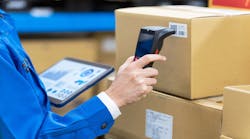When it comes to supply chain management, the pharmaceutical industry is characteristically conservative compared to other key industries such as automotive, aerospace and food service. This may be due to the fact that only the basic requirements for pharmaceutical distribution have been outlined in key guidance regulations. USP <1079> is a key minimum consideration in the distribution and storage of drug product supported additionally via EMA <2013/C 343/10>, WHO Annex 9, as well as ISTA 3A, 7D, 7E. These regulations in aggregate support the basic temperature and logistics management requirements including, but not limited to, equipment performance, temperature management, and lane qualification and validation. They also place a heavier regulatory burden on companies in the pharma space.
One common observation is that current cold-chain container qualification and management processes are insufficient in effectively managing risk during regenerative or advanced therapies distribution. Current data management practices supporting basic “chain of custody” and “chain of condition” requirements within pharma cold chain shipping are primarily accomplished through passive data management devices that occasionally have GPS and reporting capabilities.
Industry efforts are already underway through both the Alliance for Regenerative Medicine (ARM) and the Foundation for the Accreditation for Cellular Therapy (FACT) who have instituted review bodies to analyze all aspects of the collection, manufacture, transportation, and administration of advanced therapies.
It has become clear that actionable cold chain logistics management is vitally important to preserving the efficacy of valuable cold chain- dependent medicines and for risk mitigation. Basic requirements outlined in 21 CFR 210 and 21 CFR 211 for traceability of equipment utilized in the manufacture and storage of drug substance and drug product must be implemented and utilized in the drug distribution space. In addition, data management and monitoring competencies must be enhanced to transition from passive monitoring to active management of a given drug product destined for a clinical pharmacy or going directly to a patient.
Actionable cold chain logistics management is key to preserving the efficacy of valuable cold chain-dependent medicines.
Impact of next-gen technology
Innovative technology is already making its way into the space, through next-generation shippers and data management devices that not only report on chain of custody and chain of condition, but also have the ability to interact with a user and be reprogrammed on the fly to update any documentation, airway bills, or provide real-time visibility of the environmental conditions of the unit. In addition, next-generation tracking technology will provide better transparency and security, and enhance the ability to intercede on a package that needs immediate servicing or redirection to prevent an excursion due to delay, package integrity, or other reasons.
Enhanced tracking technology is now enabling faster, more accurate transparency in the movement of pharma products. This is being accomplished through augmented GPS (Bluetooth, WiFi, IoT), next-generation data loggers and enhanced software management capabilities.
If we look at some of the reported capabilities of one of the new tech-centric logistics start-ups, Airspace Technologies, they outline system enhancements — some of which are not readily available in the pharma supply chain space. These include the following:
- A digitally integrated, surface and air expedited transportation network, designed for time-critical logistics.
- Automated data analysis of fastest origin/destination routings. Taking into consideration real-time traffic conditions and an estimated 25,000 daily domestic flights.
- An internet accessible “live” visual map interface, displaying continuous shipment status updates onboard vehicles and aircraft.
- Geofencing capabilities to provide shipment proximity notifications to alert necessary personnel.
- Proactive event management notifications, including exception alerts, to efficiently communicate any potential delays to your organization.
- Automated proof of pick-up and proof of delivery system notifications.
- Readily available photo verification of shipments picking up and delivering.
In addition to enhanced tracking technology, next-generation data transmission capabilities are also having an impact on the supply chain space. Radio frequency identification (RFID) technology can provide valuable data for optimizing business processes, increase the degree of automation, and eliminate bottlenecks. The biggest advantage of this technology is undoubtedly its ability to identify and monitor movements of persons or assets in batch mode without line of sight on a bar code. RFID, while having struggled with adoption in the pharma space, does have promise as it can be used to append a specific package automatically to a vehicle or shipping container in real time.
Additionally, the advent and roll out of 5G-enabled sensors could easily make a large amount of data available to stakeholders in the supply chain in real time. The data may include location, temperature, moisture, pressure, and other information that can be crucial to properly managing products in a supply chain with more proactive data transfer in both directions as well as better battery life management of key sensors and data loggers. 5G could also allow enhanced vehicle-to-vehicle communications (V2V) — a key component to improving road safety in the emerging world of driverless vehicles.
AI enters the scene
Artificial Intelligence (AI) is also becoming more routine in supply chain management. Artificial intelligence can enable exceptional agility and precision in supply chains, regardless of the industry. It can also ignite a transformational increase in efficiencies and decrease in costs where repetitive manual tasks can be automated. There are many applications of artificial intelligence in the supply chain, including AI-enabled robotics, like inventory-management drones or automated-guided vehicles such as driverless warehouse carts. Supply chain managers can apply the capabilities of AI to analyze and track data, clean it, detect anomalies, and generate predictions to improve and connect the supply chain from the first to the last mile. Some of the applications of AI-based supply chain management include:
- Machine learning-based algorithms that are the foundation of the next generation of logistics technologies, with the most significant gains being made with advanced resource scheduling systems.
- Machine learning that shows the potential to reduce logistics costs by finding patterns in track-and-trace data captured using IoT-enabled sensors
- The ability to detect and act on inconsistent supplier quality levels and deliveries using machine learning-based applications.
Intelligent packaging
Lastly, companies are developing intelligent packaging and software solutions that leverage some of the aforementioned next generation technology to provide better transparency, security, and accountability during transit. Cryoport has focused on utilization of packaging and software technology to better understand and manage risk from untrained personnel handling equipment that is responsible for transporting patient-specific, irreplaceable material from the manufacturer to patient.
Next-generation packaging solutions provide enhanced control measures and added safety buffers and can be integrated into driver management or freight management platforms to further integrate and optimize supply chain performance. Effective integration of packaging and transportation management platforms can provide transportation companies or drivers with the ability to more effectively manage delays, damage, or patient specific events that may have a negative impact on an individual or organization.
The future technologies coming into the supply chain are clearly going to enable more ways to communicate, track, mitigate risk, and improve the outcomes for temperature-controlled logistics. While some applications may take longer to become widely used or adopted, many others are already on the way to a supply chain near you.






